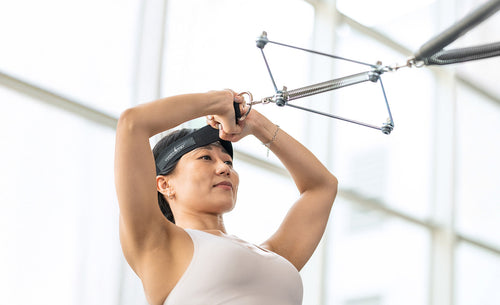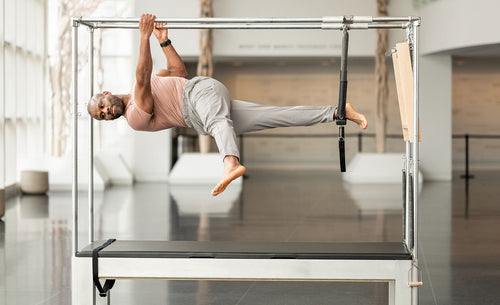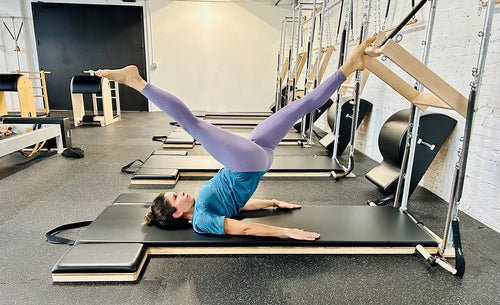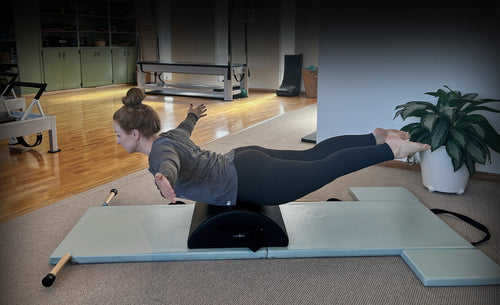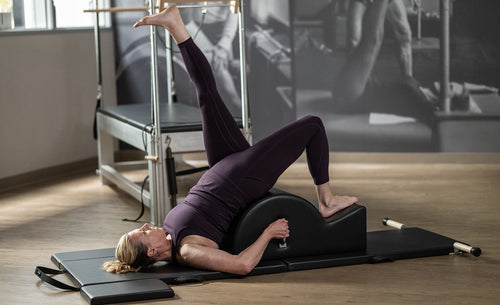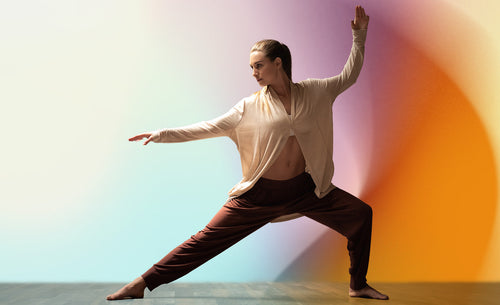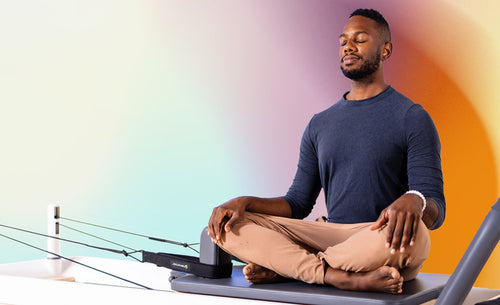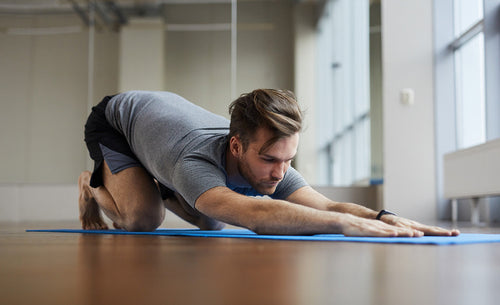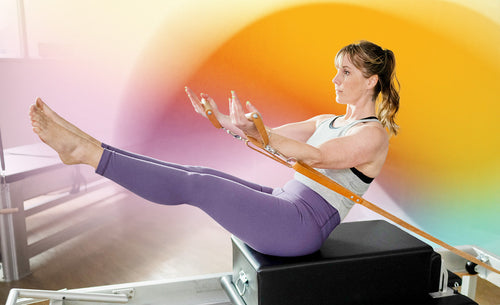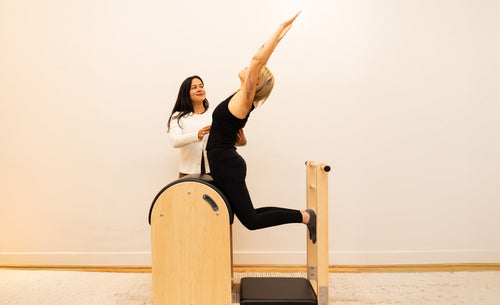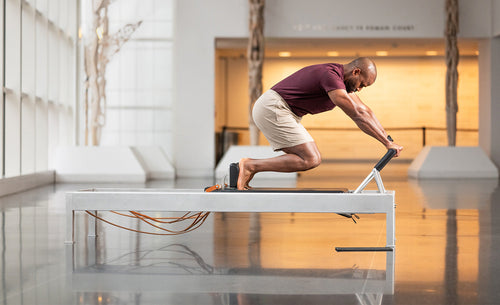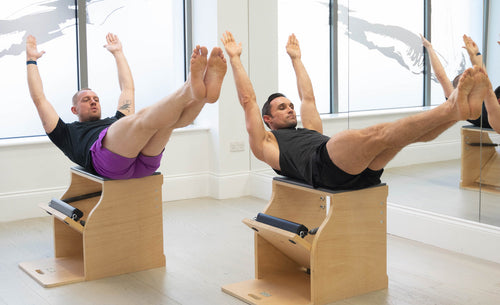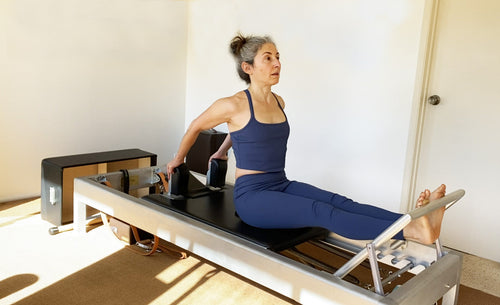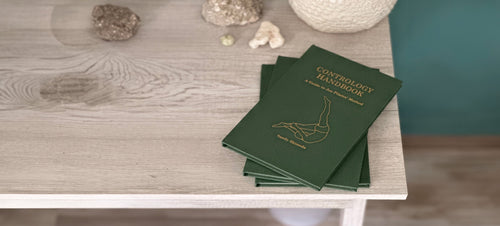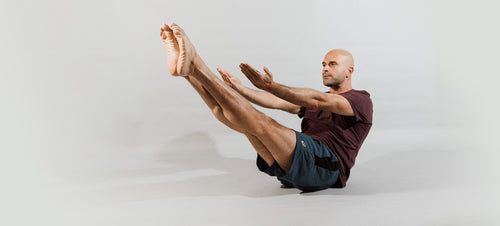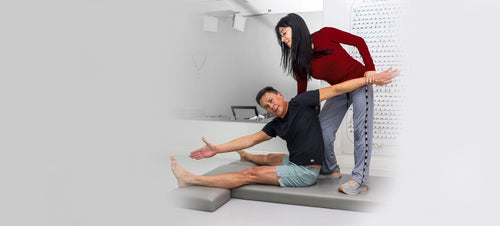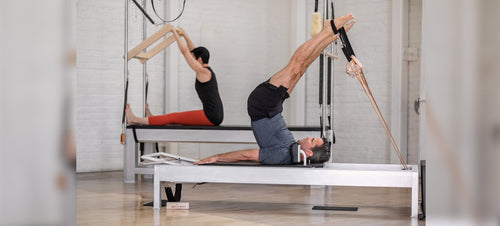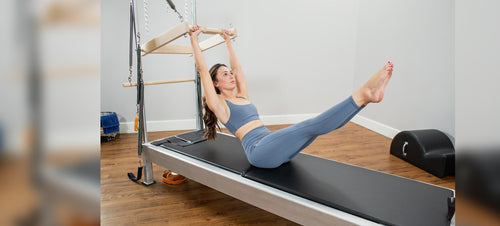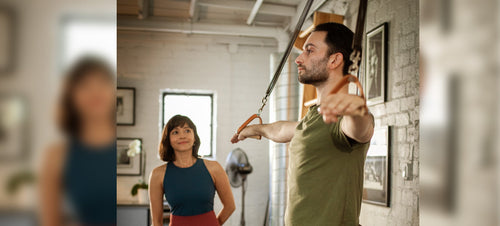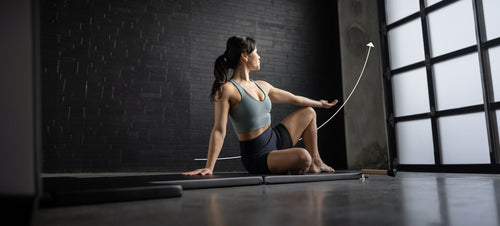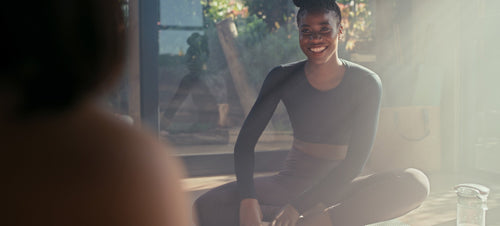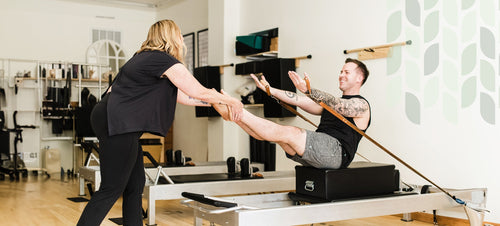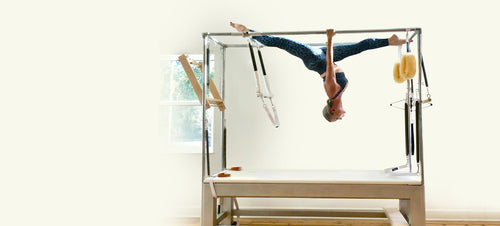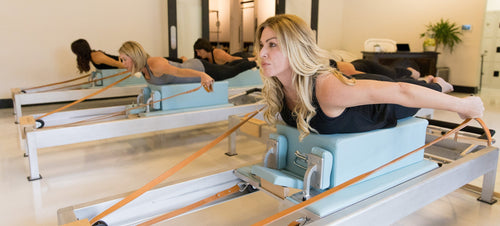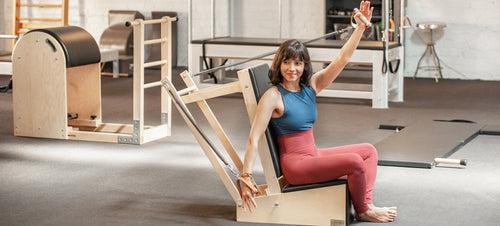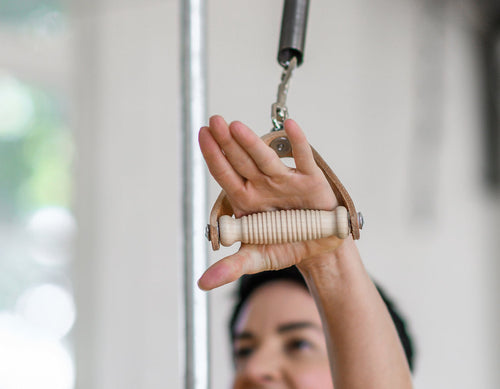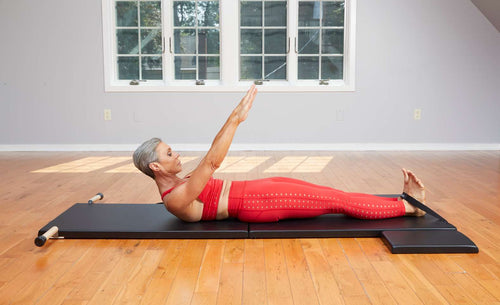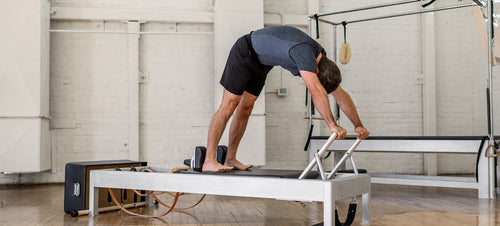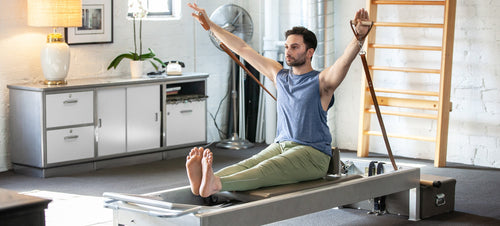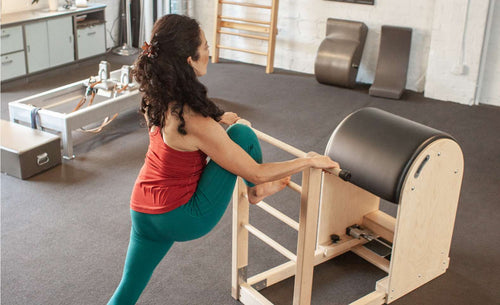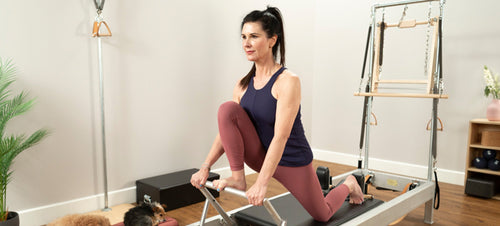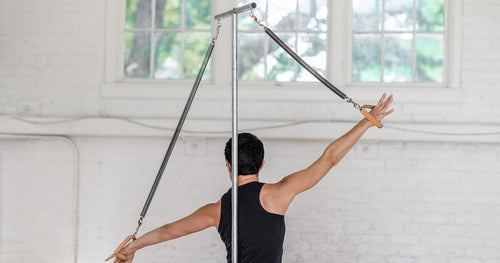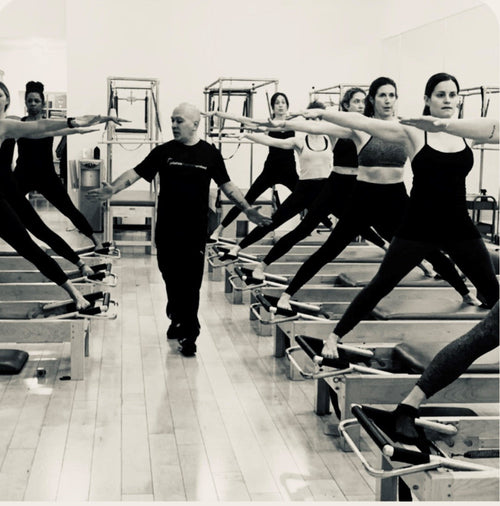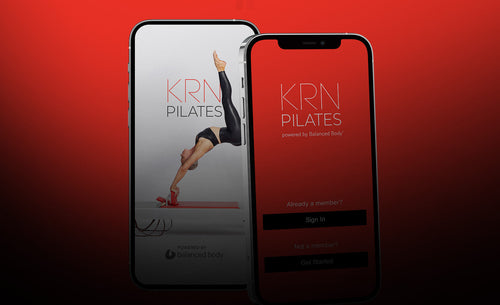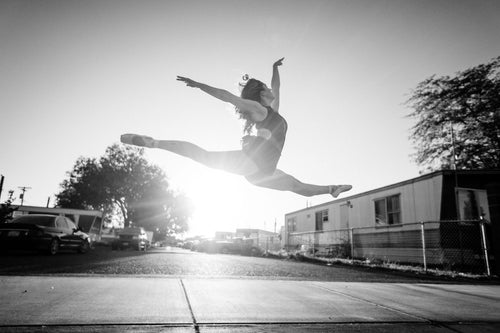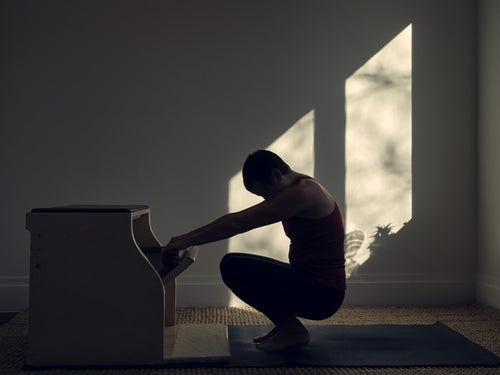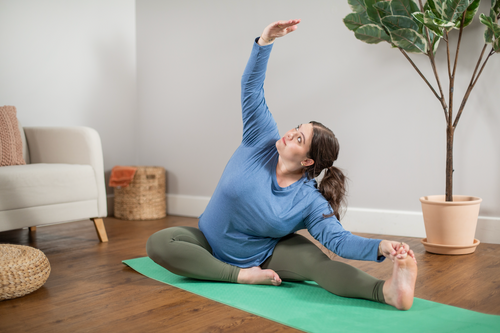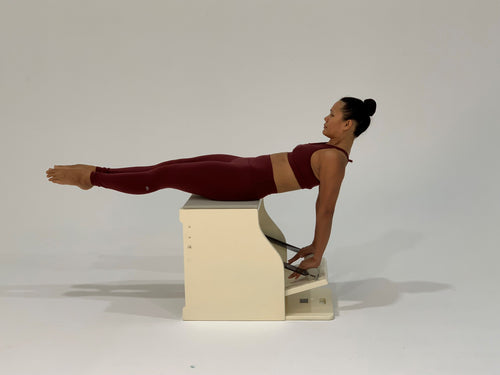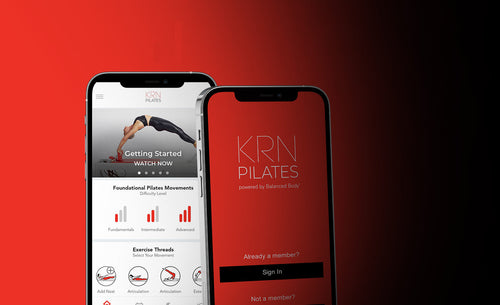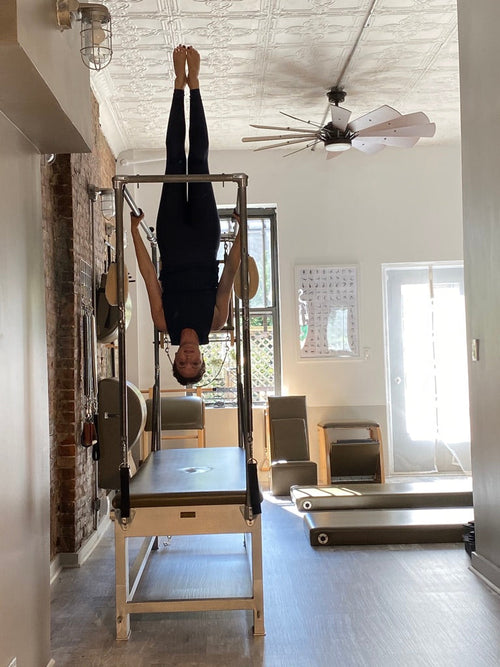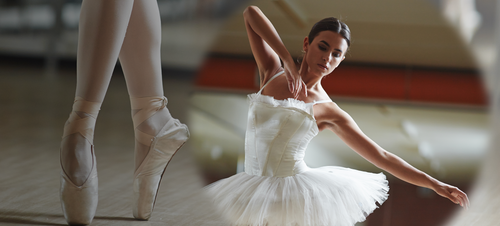When it comes to Pilates apparatus, the spine corrector may have a small profile, but its impact is nothing short of mighty. This essential apparatus is pivotal in developing a balanced spinal extension, making it a key component in classical Pilates.
Introduced early in the intermediate system, the spine corrector is a versatile tool that utilizes every inch of its compact real estate. The arm series, for example, which opens the chest, the upper back, and neck, can be performed with the tailbone on the lip of the barrel to minimize extension in the upper back, on the floor over the curve to open the chest and upper back more profoundly and by sitting in the well and extending over the arc, as if we were on the ladder barrel to mimic a supported bridge. In any position, it guides students to open their backs uniformly, stretch their chests, and foster healthy cervical extension.
The high scissors, bicycle, and shoulder bridge help students find the supported positions for these exercises, which will later progress them to the advanced mat. The teasers, an essential part of the Pilates repertoire, find their perfect companion in the spine corrector. This dynamic duo supports proper body positioning while simultaneously relieving stress on the hip flexors and supports using the seat.
The spine corrector truly comes into its own during exercises like the swan, swimming, and rocking. Performing these exercises on the top of the spine corrector encourages correct prone extension, balance, and coordination. It supports proper positioning on the mat, contributing to a well-rounded Pilates practice.
In the realm of Pilates apparatus, the spine corrector stands tall, proving that size is no barrier to impact. Its role in fostering balance, extension, and overall body awareness makes it an indispensable companion on the journey to better posture and a healthier, stronger body. So, next time you encounter the spine corrector in your Pilates studio, remember that it may be small, but its benefits are indeed mighty.




